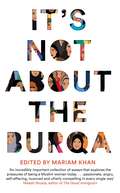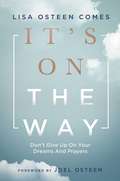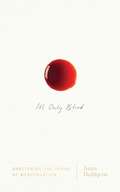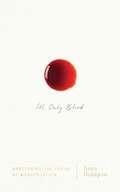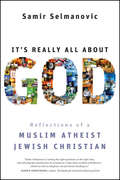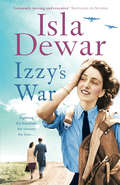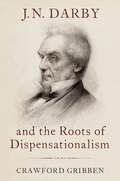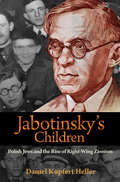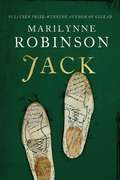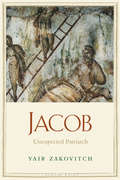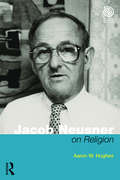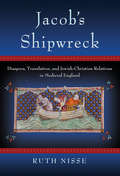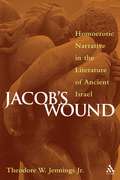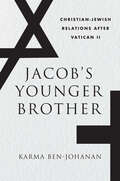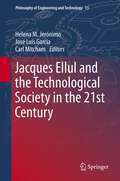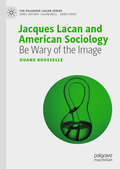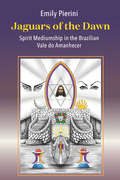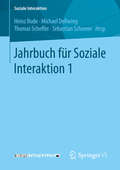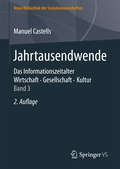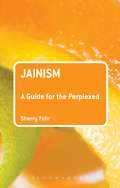- Table View
- List View
It's Not About the Burqa: Muslim Women on Faith, Feminism, Sexuality and Race
by Mariam KhanWhen was the last time you heard a Muslim woman speak for herself without a filter? In 2016, Mariam Khan read that David Cameron had linked the radicalization of Muslim men to the ‘traditional submissiveness’ of Muslim women. Mariam felt pretty sure she didn’t know a single Muslim woman who would describe herself that way. Why was she hearing about Muslim women from people who were neither Muslim, nor female?Years later the state of the national discourse has deteriorated even further, and Muslim women’s voices are still pushed to the fringes – the figures leading the discussion are white and male.Taking one of the most politicized and misused words associated with Muslim women and Islamophobia, It’s Not About the Burqa is poised to change all that. Here are voices you won’t see represented in the national news headlines: seventeen Muslim women speaking frankly about the hijab and wavering faith, about love and divorce, about feminism, queer identity, sex, and the twin threats of a disapproving community and a racist country. With a mix of British and international women writers, from activist Mona Eltahawy's definition of a revolution to journalist and broadcaster Saima Mir telling the story of her experience of arranged marriage, from author Sufiya Ahmed on her Islamic feminist icon to playwright Afshan D'souza-Lodhi's moving piece about her relationship with her hijab, these essays are funny, warm, sometimes sad, and often angry, and each of them is a passionate declaration calling time on the oppression, the lazy stereotyping, the misogyny and the Islamophobia.What does it mean, exactly, to be a Muslim woman in the West today? According to the media, it’s all about the burqa.Here’s what it’s really about.
It's On the Way: Don't Give Up on Your Dreams and Prayers
by Lisa Osteen ComesIn this inspiring spiritual guidebook, the Associate Pastor of Lakewood Church demonstrates how to keep an attitude of faith in times of discouragement and to trust God in every season.At times, we all find ourselves in seasons of waiting—for our dreams to be fulfilled, our prayers to be answered, or our circumstances to change. But your dream has an appointed time and God always has victory in store for you. And the seasons of waiting don't need to be periods of discouragement or hopelessness. Instead, they can be rich periods of joy, growth and preparation for the plans and promotion that God has in store for you.In It's On the Way, Lisa Osteen Comes reminds readers that during these inevitable times in our lives, God is faithful and our current season is temporary. Lisa teaches readers how to press through challenges, quit taking shortcuts instead of trusting God to give you His best, allow God to fight your battles, and silence the enemy within, while giving encouragement and practical steps to take when you don't know what to do next.
It's Only Blood: Shattering the Taboo of Menstruation
by Anna DahlqvistAcross the world, 2 billion people experience menstruation, yet menstruation is seen as a mark of shame. We are told not to discuss it in public, that tampons and sanitary pads should be hidden away, the blood rendered invisible. In many parts of the world, poverty, culture and religion collide causing the taboo around menstruation to have grave consequences. Younger people who menstruate are deterred from going to school, adults from work, infections are left untreated. The shame is universal and the silence a global rule. In It's Only Blood Anna Dahlqvist tells the shocking but always moving stories of why and how people from Sweden to Bangladesh, from the United States to Uganda, are fighting back against the shame.
It's Only Blood: Shattering the Taboo of Menstruation
by Anna DahlqvistAcross the world, 2 billion people experience menstruation, yet menstruation is seen as a mark of shame. We are told not to discuss it in public, that tampons and sanitary pads should be hidden away, the blood rendered invisible. In many parts of the world, poverty, culture and religion collide causing the taboo around menstruation to have grave consequences. Younger people who menstruate are deterred from going to school, adults from work, infections are left untreated. The shame is universal and the silence a global rule. In It's Only Blood Anna Dahlqvist tells the shocking but always moving stories of why and how people from Sweden to Bangladesh, from the United States to Uganda, are fighting back against the shame.
It's Really All About God: How Islam, Atheism, and Judaism Made Me a Better Christian
by Samir SelmanovicA fresh exploration of a redeeming, dynamic, and radically different way to hold one's religion Samir Selmanovic—who grew up a in a culturally Muslim family in Croatia, converted to Christianity as a soldier in the then-Yugoslavian army, and went on to become a Christian pastor in Manhattan and in Southern California—looks at how our ongoing and sometimes violent power struggles over who owns God and what God wants for the world and its peoples are not serving God, humanity, or our planet. Shows how our religions have become self-serving, God-management systems, however Selmanovic contends—change is possible Offers a path for people of all faiths and traditions for living together on our fragile earth Karen Armstrong said that the book is "asking the right questions at the right time" This is a personal story and a moving exploration of a new way of treasuring one's own religion while discovering God, goodness, and grace in others and in their traditions.
It's Really All About God: How Islam, Atheism, and Judaism Made Me a Better Christian
by Samir SelmanovicA fresh exploration of a redeeming, dynamic, and radically different way to hold one's religion Samir Selmanovic—who grew up a in a culturally Muslim family in Croatia, converted to Christianity as a soldier in the then-Yugoslavian army, and went on to become a Christian pastor in Manhattan and in Southern California—looks at how our ongoing and sometimes violent power struggles over who owns God and what God wants for the world and its peoples are not serving God, humanity, or our planet. Shows how our religions have become self-serving, God-management systems, however Selmanovic contends—change is possible Offers a path for people of all faiths and traditions for living together on our fragile earth Karen Armstrong said that the book is "asking the right questions at the right time" This is a personal story and a moving exploration of a new way of treasuring one's own religion while discovering God, goodness, and grace in others and in their traditions.
Izzy's War
by Isla DewarVicar's daughter Izzy feels hugely guilty that she's having a very good war. Having learned to fly in a travelling circus before the war, she's now joined the Air Transport Auxiliary as one of their few female pilots and is having the time of her life. The only cloud on the horizon is having to lie to her father about her exact role in the ATA. Her father is against the whole notion of women flying - he certainly wouldn't approve of her becoming a 'spitfire girl'.Izzy also feels distinctly out of place among the more upper class ladies of the ATA. She would love to be as worldly as her flighty housemate, Julia, or as sophisticated as society wife Clare. But when Izzy finds herself falling for the charms of a dashing American doctor it is to Julia and Clare that she turns for help...
J.N. Darby and the Roots of Dispensationalism: Before Collapse
by Ross MittigaThere is now clear scientific consensus that, without immediate and decisive action, the world risks climate catastrophe. This has fueled climate emergency declarations among activist groups and, increasingly, among local, state, and supranational governments. But what exactly counts as a "climate catastrophe" and what does catastrophic climate change portend for contemporary societies? This book argues that climate change is politically catastrophic insofar as it threatens to undermine the material conditions that make justice - and by extension stable democratic government - possible. It then uses the lens of catastrophe to bring into focus pressing questions concerning how to navigate trade-offs between fairness and precautionary efficacy in the design of climate policy, the permissibility of authoritarian climate emergency powers, and the nature and role of climate disobedience. Apart perhaps from the spectre of nuclear annihilation, human civilization has never had to reckon with a threat so final and encompassing as that of climate catastrophe. Much as some have argued that "supreme necessity" alters the contours of what is permissible in war, this book starts from the premise that the credible threat of politically catastrophic climate change upends many of the most basic and widely shared assumptions in liberal and democratic thought.
Jabotinsky's Children: Polish Jews and the Rise of Right-Wing Zionism
by Daniel Kupfert HellerHow interwar Poland and its Jewish youth were instrumental in shaping the ideology of right-wing ZionismBy the late 1930s, as many as fifty thousand Polish Jews belonged to Betar, a youth movement known for its support of Vladimir Jabotinsky, the founder of right-wing Zionism. Poland was not only home to Jabotinsky’s largest following. The country also served as an inspiration and incubator for the development of right-wing Zionist ideas. Jabotinsky’s Children draws on a wealth of rare archival material to uncover how the young people in Betar were instrumental in shaping right-wing Zionist attitudes about the roles that authoritarianism and military force could play in the quest to build and maintain a Jewish state.Recovering the voices of ordinary Betar members through their letters, diaries, and autobiographies, Jabotinsky’s Children paints a vivid portrait of young Polish Jews and their turbulent lives on the eve of the Holocaust. Rather than define Jabotinsky as a firebrand fascist or steadfast democrat, the book instead reveals how he deliberately delivered multiple and contradictory messages to his young followers, leaving it to them to interpret him as they saw fit. Tracing Betar’s surprising relationship with interwar Poland’s authoritarian government, Jabotinsky’s Children overturns popular misconceptions about Polish-Jewish relations between the two world wars and captures the fervent efforts of Poland’s Jewish youth to determine, on their own terms, who they were, where they belonged, and what their future held in store.Shedding critical light on a vital yet neglected chapter in the history of Zionism, Jabotinsky’s Children provides invaluable perspective on the origins of right-wing Zionist beliefs and their enduring allure in Israel today.
Jabotinsky's Children: Polish Jews and the Rise of Right-Wing Zionism
by Daniel Kupfert HellerHow interwar Poland and its Jewish youth were instrumental in shaping the ideology of right-wing ZionismBy the late 1930s, as many as fifty thousand Polish Jews belonged to Betar, a youth movement known for its support of Vladimir Jabotinsky, the founder of right-wing Zionism. Poland was not only home to Jabotinsky’s largest following. The country also served as an inspiration and incubator for the development of right-wing Zionist ideas. Jabotinsky’s Children draws on a wealth of rare archival material to uncover how the young people in Betar were instrumental in shaping right-wing Zionist attitudes about the roles that authoritarianism and military force could play in the quest to build and maintain a Jewish state.Recovering the voices of ordinary Betar members through their letters, diaries, and autobiographies, Jabotinsky’s Children paints a vivid portrait of young Polish Jews and their turbulent lives on the eve of the Holocaust. Rather than define Jabotinsky as a firebrand fascist or steadfast democrat, the book instead reveals how he deliberately delivered multiple and contradictory messages to his young followers, leaving it to them to interpret him as they saw fit. Tracing Betar’s surprising relationship with interwar Poland’s authoritarian government, Jabotinsky’s Children overturns popular misconceptions about Polish-Jewish relations between the two world wars and captures the fervent efforts of Poland’s Jewish youth to determine, on their own terms, who they were, where they belonged, and what their future held in store.Shedding critical light on a vital yet neglected chapter in the history of Zionism, Jabotinsky’s Children provides invaluable perspective on the origins of right-wing Zionist beliefs and their enduring allure in Israel today.
Jack: A Novel
by Marilynne Robinson'Grace and intelligence ...[her work] defines universal truths about what it means to be human' Barack ObamaMarilynne Robinson, winner of the Pulitzer Prize and the American National Humanities Medal, returns to the world of Gilead with Jack, the final in one of the great works of contemporary American fiction.Jack tells the story of John Ames Boughton, the loved and grieved-over prodigal son of a Presbyterian minister in Gilead, Iowa, a drunkard and a ne'er-do-well. In segregated St. Louis sometime after World War II, Jack falls in love with Della Miles, an African-American high school teacher, also a preacher's child, with a discriminating mind, a generous spirit and an independent will. Their fraught, beautiful story is one of Robinson's greatest achievements.
Jacob: Unexpected Patriarch (Jewish Lives)
by Prof. Yair ZakovitchA powerful hero of the Bible, Jacob is also one of its most complex figures. Bible stories recounting his life often expose his deception, lies, and greed—then, puzzlingly, attempt to justify them. In this book, eminent biblical scholar Yair Zakovitch presents a complete view of the patriarch, first examining Jacob and his life story as presented in the Bible, then also reconstructing the stories that the Bible writers suppressed—tales that were well-known, perhaps, but incompatible with the image of Jacob they wanted to promote. Through a work of extraordinary “literary archaeology,” Zakovitch explores the recesses of literary history, reaching back even to the stage of oral storytelling, to identify sources of Jacob's story that preceded the work of the Genesis writers.The biblical writers were skilled mosaic-makers, Zakovitch shows, and their achievement was to reshape diverse pre-biblical representations of Jacob in support of their emerging new religion and identity. As the author follows Jacob in his wanderings and revelations, his successes, disgraces, and disappointments, he also considers the religious and political environment in which the Bible was written, offering a powerful explication of early Judaism.
Jacob Neusner on Religion: The Example of Judaism (Key Thinkers in the Study of Religion)
by Aaron W HughesJacob Neusner was a prolific and innovative contributor to the study of religion for over fifty years. A scholar of rabbinic Judaism, Neusner regarded Jewish texts as data to address larger questions in the academic study of religion that he helped to formulate. Jacob Neusner on Religion offers the first full critical assessment of his thought on the subject of religion. Aaron W. Hughes delineates the stages of Neusner’s career and provides an overview of Neusner’s personal biography and critical reception. This book is essential reading for students and scholars interested in Neusner specifically, or in the history of Religious Studies, Jewish Studies, and philosophy of religion more broadly.
Jacob Neusner on Religion: The Example of Judaism (Key Thinkers in the Study of Religion)
by Aaron W HughesJacob Neusner was a prolific and innovative contributor to the study of religion for over fifty years. A scholar of rabbinic Judaism, Neusner regarded Jewish texts as data to address larger questions in the academic study of religion that he helped to formulate. Jacob Neusner on Religion offers the first full critical assessment of his thought on the subject of religion. Aaron W. Hughes delineates the stages of Neusner’s career and provides an overview of Neusner’s personal biography and critical reception. This book is essential reading for students and scholars interested in Neusner specifically, or in the history of Religious Studies, Jewish Studies, and philosophy of religion more broadly.
Jacob's Shipwreck: Diaspora, Translation, and Jewish-Christian Relations in Medieval England
by Ruth NisseJewish and Christian authors of the High Middle Ages not infrequently came into dialogue or conflict with each other over traditions drawn from ancient writings outside of the bible. Circulating in Latin and Hebrew adaptations and translations, these included the two independent versions of the Testament of Naphtali in which the patriarch has a vision of the Diaspora, a shipwreck that scatters the twelve tribes. The Christian narrative is linear and ends in salvation; the Jewish narrative is circular and pessimistic. For Ruth Nisse, this is an emblematic text that illuminates relationships between interpretation, translation, and survival.In Nisse’s account, extrabiblical literature encompasses not only the historical works of Flavius Josephus but also, in some of the more ingenious medieval Hebrew imaginative texts, Aesop’s fables and the Aeneid. While Christian-Jewish relations in medieval England and Northern France are most often associated with Christian polemics against Judaism and persecutions of Jews in the wake of the Crusades, the period also saw a growing interest in language study and translation in both communities. These noncanonical texts and their afterlives provided Jews and Christians alike with resources of fiction that they used to reconsider boundaries of doctrine and interpretation. Among the works that Nisse takes as exemplary of this intersection are the Book of Yosippon, a tenth-century Hebrew adaptation of Josephus with a wide circulation and influence in the later middle ages, and the second-century romance of Aseneth about the religious conversion of Joseph’s Egyptian wife. Yosippon gave Jews a new discourse of martyrdom in its narrative of the fall of Jerusalem, and at the same time it offered access to the classical historical models being used by their Christian contemporaries. Aseneth provided its new audience of medieval monks with a way to reimagine the troubling consequences of unwilling Jewish converts.
Jacob's Wound: Homoerotic Narrative in the Literature of Ancient Israel
by Theodore W. Jennings Jr.The very suggestion that there may be homoeroticism in Hebrew narrative may seem odd given the supposition that the religion and culture of ancient Israel resolutely opposed same sex erotic relationships. The apparent prohibition of homosexuality in Leviticus and the story of Sodom from Genesis have been made to speak for the whole Hebrew Bible. The oddity of this situation has not been lost on some interpreters who have recognized that the story of Sodom tells us no more about attitudes toward what we call homosexuality than the story of the rape of Dina tells us about attitudes toward heterosexuality. Prof. Jennings says that the well-known eroticism of the Hebrew Bible is not confined to heterosexuality but also includes an astonishing diversity of material that lends itself to homoerotic interpretation. In Part one, Jennings examines saga materials associated with David. It is no innovation to detect in the David and Jonathan's relationship at least the outline of a remarkable love story between two men. What becomes clear, however, is that the tale is far more complex than this since it involves Saul and is set within a context of a warrior society that takes for granted that male heroes will be accompanied by younger or lower status males. Thus the complex erotic connections between David and Saul and David and Jonathan play out against the backdrop of a context of "heroes and pals." The second type of same sex relationship explored has to do with shamanistic forms of eroticism in which the sacral power of the holy man is both a product of same sex relationship and expressed through same sex practice. This section deals with Samuel and Saul and Elijah and Elisha. These are not warriors but persons whose sacral power is also erotic power that may find expression in erotic practices with persons of the same sex.The third type of same sex relationship discusses we now call transgendered persons, especially males, and their erotic relationship to (other) males. Here the book explores the transgendering of Israel by several prophets who use this device to explore the adultery and promiscuity that they wish to attribute to Israel, as well as the story of Joseph.
Jacob’s Younger Brother: Christian-Jewish Relations after Vatican II
by Karma Ben-JohananA revealing account of contemporary tensions between Jews and Christians, playing out beneath the surface of conciliatory interfaith dialogue. A new chapter in Jewish-Christian relations opened in the second half of the twentieth century when the Second Vatican Council exonerated Jews from the accusation of deicide and declared that the Jewish people had never been rejected by God. In a few carefully phrased statements, two millennia of deep hostility were swept into the trash heap of history. But old animosities die hard. While Catholic and Jewish leaders publicly promoted interfaith dialogue, doubts remained behind closed doors. Catholic officials and theologians soon found that changing their attitude toward Jews could threaten the foundations of Christian tradition. For their part, many Jews perceived the new Catholic line as a Church effort to shore up support amid atheist and secular advances. Drawing on extensive research in contemporary rabbinical literature, Karma Ben-Johanan shows that Jewish leaders welcomed the Catholic condemnation of antisemitism but were less enthusiastic about the Church’s sudden urge to claim their friendship. Catholic theologians hoped Vatican II would turn the page on an embarrassing history, hence the assertion that the Church had not reformed but rather had always loved Jews, or at least should have. Orthodox rabbis, in contrast, believed they were finally free to say what they thought of Christianity. Jacob’s Younger Brother pulls back the veil of interfaith dialogue to reveal how Orthodox rabbis and Catholic leaders spoke about each other when outsiders were not in the room. There Ben-Johanan finds Jews reluctant to accept the latest whims of a Church that had unilaterally dictated the terms of Jewish-Christian relations for centuries.
Jacques Ellul and the Technological Society in the 21st Century (Philosophy of Engineering and Technology #13)
by Helena M. Jerónimo, José Luís Garcia and Carl MitchamThis volume rethinks the work of Jacques Ellul (1912-1994) on the centenary of his birth, by presenting an overview of the current debates based on Ellul's insights. As one of the most significant twentieth-century thinkers about technology, Ellul was among the first thinkers to realize the importance of topics such as globalization, terrorism, communication technologies and ecology, and study them from a technological perspective. The book is divided into three sections. The first discusses Ellul’s diagnosis of modern society, and addresses the reception of his work on the technological society, the notion of efficiency, the process of symbolization/de-symbolization, and ecology. The second analyzes communicational and cultural problems, as well as threats and trends in early twenty-first century societies. Many of the issues Ellul saw as crucial – such as energy, propaganda, applied life sciences and communication – continue to be so. In fact they have grown exponentially, on a global scale, producing new forms of risk. Essays in the final section examine the duality of reason and revelation. They pursue an understanding of Ellul in terms of the depth of experience and the traditions of human knowledge, which is to say, on the one hand, the experience of the human being as contained in the rationalist, sociological and philosophical traditions. On the other hand there are the transcendent roots of human existence, as well as “revealed knowledge,” in the mystical and religious traditions. The meeting of these two traditions enables us to look at Ellul’s work as a whole, but above all it opens up a space for examining religious life in the technological society.
Jacques Lacan and American Sociology: Be Wary of the Image (The Palgrave Lacan Series)
by Duane RousselleIn this Palgrave Pivot, Duane Rousselle aims to disrupt the hold that pragmatist ideology has had over American sociology by demonstrating that the social bond has always been founded upon a fundamental and primordial bankruptcy. Using the Lacanian theory of “capitalist discourse,” Rousselle demonstrates that most of early American sociology suffered from an inadequate account of the “symbolic” within the mental and social lives of the individual subject. The psychoanalytic aspect of the social bond remained theoretically undeveloped in the American context. Instead it is the “image,” a product of the imaginary, which takes charge over any symbolic function. This intervention into pragmatic sociology seeks to recover the tradition of “grand theory” by bringing psychoanalytical and sociological discourse into fruitful communication with one another.
Jaguars of the Dawn: Spirit Mediumship in the Brazilian Vale do Amanhecer
by Emily PieriniThe Brazilian Spiritualist Christian Order Vale do Amanhecer (Valley of the Dawn) is the place where the worlds of the living and the spirits merge and the boundaries between lives are regularly crossed. Drawing upon over a decade of extensive fieldwork in temples of the Amanhecer in Brazil and Europe, the author explores how mediums understand their experiences and how they learn to establish relationships with their spirit guides. She sheds light on the ways in which mediumistic development in the Vale do Amanhecer is used for therapeutic purposes and informs notions of body and self, of illness and wellbeing.
Jaguars of the Dawn: Spirit Mediumship in the Brazilian Vale do Amanhecer
by Emily PieriniThe Brazilian Spiritualist Christian Order Vale do Amanhecer (Valley of the Dawn) is the place where the worlds of the living and the spirits merge and the boundaries between lives are regularly crossed. Drawing upon over a decade of extensive fieldwork in temples of the Amanhecer in Brazil and Europe, the author explores how mediums understand their experiences and how they learn to establish relationships with their spirit guides. She sheds light on the ways in which mediumistic development in the Vale do Amanhecer is used for therapeutic purposes and informs notions of body and self, of illness and wellbeing.
Jaguars of the Dawn: Spirit Mediumship in the Brazilian Vale do Amanhecer
by Emily PieriniThe Brazilian Spiritualist Christian Order Vale do Amanhecer (Valley of the Dawn) is the place where the worlds of the living and the spirits merge and the boundaries between lives are regularly crossed. Drawing upon over a decade of extensive fieldwork in temples of the Amanhecer in Brazil and Europe, the author explores how mediums understand their experiences and how they learn to establish relationships with their spirit guides. She sheds light on the ways in which mediumistic development in the Vale do Amanhecer is used for therapeutic purposes and informs notions of body and self, of illness and wellbeing.
Jahrbuch für Soziale Interaktion 1 (Soziale Interaktion)
by Heinz Bude Michael Dellwing Thomas Scheffer Sebastian ScheererDas Jahrbuch Soziale Interaktion bietet dem Forschungs- und Denkstil des Symbolischen Interaktionismus im deutschen Sprachraum eine Plattform. Seit den 1970er Jahren liegen die entsprechenden Referenztexte von George Herbert Mead, Herbert Blumer, Erving Goffman oder Anselm Strauss in Übersetzung vor. Auch sind in den letzten fünfzig Jahren eine Reihe von davon angeleiteten Untersuchungen entstanden, aber vom Entstehen einer Forschungslandschaft kann in der deutschsprachigen Soziologie keine Rede sein. Hierzu will diese Publikation ihre Dienste leisten.
Jahrtausendwende: Das Informationszeitalter. Wirtschaft. Gesellschaft. Kultur. Band 3 (Neue Bibliothek der Sozialwissenschaften)
by Manuel CastellsDieser Band zeigt ausgehend vom Zerfall der Sowjetunion die Unfähigkeit zentralistischer Staatswirtschaften zur Bewerkstelligung der Transformation hin zum Informationszeitalter. Aber Ungleichheit, Polarisierung und sozialer Ausschluss als Folgen der Globalisierung zeigen sich dem Autor weltweit, u.a. an städtischer Armut und der Not der Kinder. Zugleich zeigt Castells, dass und wie eine global organisierte Kriminalität Wirtschaft und Politik vieler Länder bedroht. Schließlich lenkt er den Blick auf den asiatisch-pazifischen Raum als einen der wichtigsten Einflussfaktoren der Weltwirtschaft. Im dritten Band liefert Castells schließlich das Resümee der Trilogie. Es bietet auf der Basis einer ungeheuren Materialfülle und -analyse die systematische Interpretation unserer Welt zur Jahrtausendwende.
Jainism: A Guide for the Perplexed (Guides for the Perplexed)
by Sherry FohrJainism is arguably the most non-violent and austere religion in the world. While lay Jains attempt to never harm humans or animals, the strict non-violence followed by the highly revered monks and nuns also proscribes harm to any living being, even a microscopic organism. And while laywomen (and a few laymen) undergo long and difficult fasts, the longest being for one month, renouncers' austerities also include pulling their hair out by the roots two to five times a year, walking bare-foot throughout India most of the year, and, in the case of some monks, not wearing any clothing at all. Jainism: A Guide for the Perplexed is a clear and thorough account of this fascinating tradition, explaining many basic Jain values, beliefs and practices in the same way they are taught to Jains themselves, through the medium of sacred narratives. Drawing from Jainism's copious and influential narrative tradition, the author explores the inner-logic of how renouncers' and laypeople's values and practices depend on an intricate Jain worldview.
